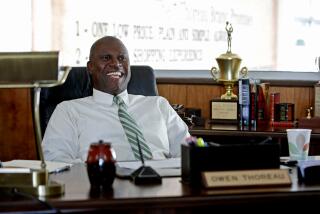No one would hire Hollywood’s top comedy director. An exonerated football star changed that
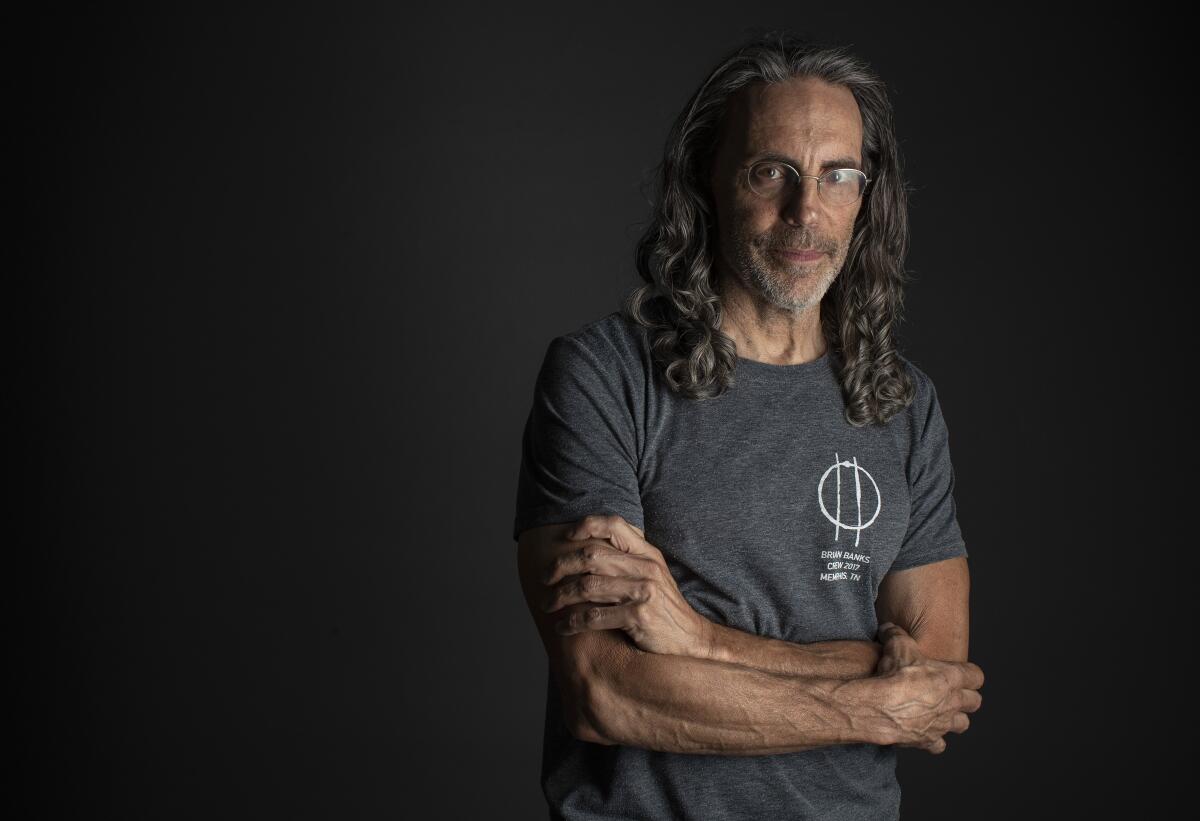
The classroom inside the Cecil C. Humphreys School of Law at the University of Memphis looked every bit the movie set — background performers filled the seats, star Greg Kinnear studied his lines and the camera department rigged lights.
But Tom Shadyac, who was making his first feature film since directing “Evan Almighty” more than a decade earlier, sounded less like a director addressing his cast and crew than a speaker at a personal development retreat.
“This, I believe, is where your generation can take the human species in the future,” Shadyac said. “Which is seeing our jobs, our careers, as a service industry — to help uplift each other and thereby being uplifted ourselves.”
Shadyac, who at 60 is inclined to tuck his long hair under a baseball cap, was halfway through shooting “Brian Banks,” a fact-based drama about a high school athlete falsely accused of rape. Even as his producers and assistant directors worried about the time, Shadyac continued with his inspirational words and introduced some of the several dozen Tennessee and Iowa students who were interning on the film. “The idea of this movie is to be holistic,” he said. “We didn’t want to tell a story of justice and not be just ourselves.”
Comedy king
For much of the 1990s and early 2000s, Shadyac was Hollywood’s top comedy director. Often working with Jim Carrey (“Ace Ventura: Pet Detective,” “Liar, Liar,” “Bruce Almighty”), Shadyac’s movies generated worldwide ticket sales of nearly $1.6 billion, just slightly less than all of the films directed by Judd Apatow and Adam McKay combined.
Shadyac, who came to Hollywood in 1983 as a 24-year-old joke writer for Bob Hope, eventually pocketed as much as $30 million a movie. He plowed that windfall into material possessions (a 17,000-square-foot villa, Old Master paintings, antiques) and enjoyed the perks of the 0.1%, such as traveling by private jet and staying in luxurious hotel suites. While he was active in philanthropy, and even started a bottled water company whose proceeds went to charity, Shadyac by his own calculation had personally become the gap between the rich and the poor.
Then, in 2007, while mountain biking in Virginia, Shadyac had an accident and hit his head. The injury itself was not initially grave but its aftermath was. Shadyac suffered from post-concussion syndrome symptoms so severe he likened them to a full-volume emergency broadcast test inside his brain, with little relief for months. Convinced he was not going to survive and ultimately contemplating suicide, Shadyac had an epiphany. I am staring at the last chapter of my life. You cannot die without ever having told your story; you cannot die without ever having expressed who you truly are.
So he essentially held an everything-must-go liquidation sale: of his life, his possessions and, as he would later find out, his reputation. He ditched his mansion and moved into a trailer park. He turned his production company into a nonprofit. In 2010, he directed a documentary called “I Am,” featuring interviews with cultural and spiritual leaders such as Archbishop Desmond Tutu. Three years later, he wrote an inspirational book, “Life’s Operating Manual,” about how to change yourself and the world, largely through selflessness. And then Shadyac made his final break with Hollywood. He moved to Memphis, where his brother lived, and devoted himself to charity. His talent agent tried to get him work but no one would bite.
It wasn’t until 2017 that he would get to make another movie with “Brian Banks.”
‘Almighty’ crossroads
In the summer of 2002, Shadyac was in production on “Bruce Almighty,” which was largely shot on and around the Universal Studios backlot. Jim Carrey starred as Buffalo, N.Y., TV reporter Bruce Nolan, who beseeches God for divine intervention after he loses a job promotion. But God, played by Morgan Freeman, actually answers the call, and lets Bruce try his hand at running the world.
The movie’s gags are often middlebrow — Bruce parts his tomato soup in a diner as if it were the Red Sea — and its theology largely superficial. But the script, written by Steve Koren, Mark O’Keefe and Steve Oedekerk, nevertheless hinted at some of the bigger questions about redemption and spirituality that Shadyac had been mulling for years, and had flirted with in some earlier, more dramatic films, like “Patch Adams” and “Dragonfly.” With global ticket sales of more than $484 million, “Bruce Almighty” would prove to be Shadyac’s biggest hit.
About 35 miles to the south, around the same time Shadyac was taking his lunch break, Brian Banks was in a summer school class at Long Beach Polytechnic High. A 6-foot-4, 225-pound linebacker, Banks was considered one of the nation’s top college prospects. Then-USC football coach Pete Carroll had told him, “You can do something. You can be something.” A career in the NFL seemed not impossible.
Banks, a senior, ducked out of class to make a phone call about a documentary on the football rivalry between Long Beach Poly and De La Salle High School in Northern California. He ran into sophomore Wanetta Gibson in a stairwell. Banks said they fooled around. Gibson said she was raped. By the end of the day, Banks was in custody, facing a possible jail sentence from 41 years to life.
Despite his professed innocence, Banks didn’t want to gamble on a jury trial, so, on his lawyer’s advice with little time to consider it, he accepted a plea deal, believing he would receive nothing more than probation. The judge sentenced him to six years in prison. Banks was a registered sex offender; his football career was over.
“Ninety-five [percent] to 97% of all criminal cases in the United States end in some form of a plea bargain,” Banks said on the Memphis set of the movie, where he worked closely with Aldis Hodge (“Hidding Figures”), who plays him in the film. Banks said it’s important that people recognize that those statistics have consequences, especially for innocent defendants. “Only 3% to 5% of cases actually go to trial.”
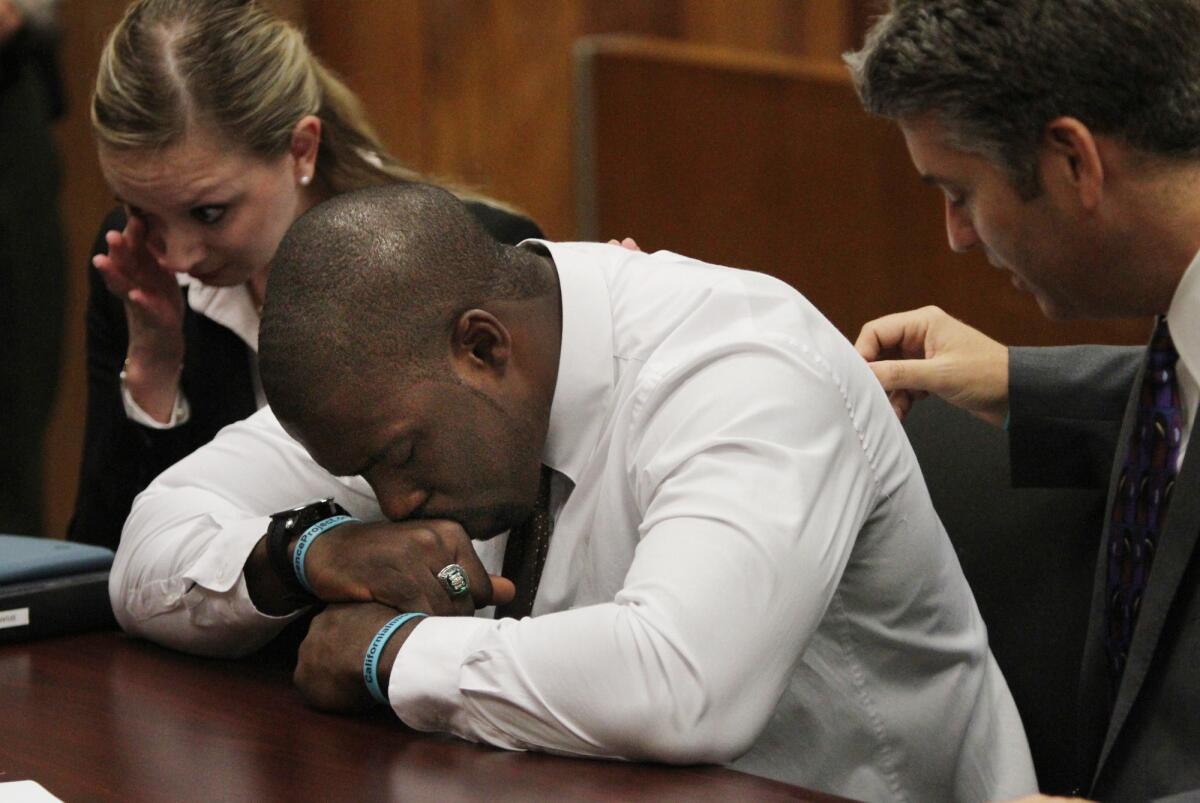
In 2011, four years after his release from prison, Banks logged onto his Facebook account. Gibson, his purported victim, had sent him a friend request. At the risk of violating his parole, Banks met with Gibson and a private investigator. “Did he rape you?” the investigator asked Gibson. Banks says she replied, “Of course not. If he raped me, I wouldn’t be here right now.” (Gibson has not commented on the charges. The Long Beach Unified School District won a $2.6 million judgment against her for suing the district over the fabricated rape claim and collecting a $1.5 million settlement.)
That admission was just the first step. It would take the California Innocence Project, led by lawyer Justin Brooks, a year to clear Banks’ name.
Scales of injustice
Producer Amy Baer (“Mary Shelley,” “Last Vegas”) read news reports about Banks’ exoneration in 2012 and wondered if it could be turned into a movie. The idea was set aside when Baer was called to jury duty. She was impaneled as an alternate in an assault case, where the defendant was an African American man. Even though alternate jurors aren’t allowed to deliberate, Baer was certain the accused was innocent, but feared he would be convicted. When he was acquitted, she couldn’t stop thinking about Brian Banks all over again.
“I was really moved by what I saw in that courtroom,” Baer said. “Justice actually worked for someone whom the system typically fails.”
Baer tracked down and secured the rights to not only Banks’ story but also the lawyer who exonerated him, Brooks, played by Kinnear. She secured the film’s nearly $10-million budget from ShivHans Pictures (“Trumbo,” “Captain Fantastic”). And then she had to find a director.
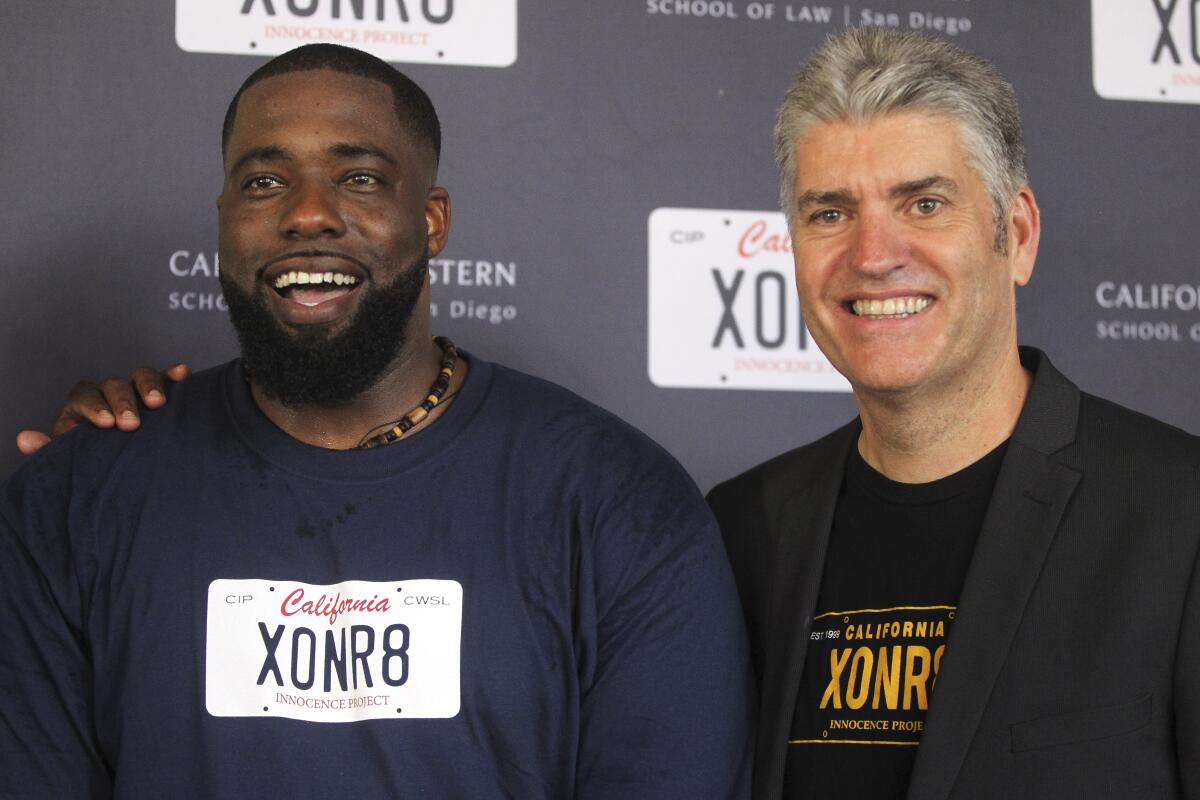
Talent agent Adam Kanter had an idea. “I know you’re going to think this is crazy,” Baer recalls Kanter telling her. “But I think Tom Shadyac would really respond to it.” Baer agreed to meet with him but suspected another director she was interviewing the same day would be the one to get the job.
“But Tom came in and he just blew me away,” Baer said. “He talked about what he had been doing in his own life after the bike accident, how he had left Hollywood and was now living in one of the poorest ZIP Codes in all of the country. He said he knew dozens of Brian Bankses in Memphis, and he was talking from experience. In a way, it felt like this movie has always been in him.”
Much of the movie, which opens Friday, is focused on how Brooks and the Innocence Project fought to exonerate Banks in 2012, with a coda about the athlete getting one last shot at the NFL. Carroll, who was by then coaching the Seattle Seahawks, offered Banks a tryout; Banks actually played in several preseason games for the Atlanta Falcons.
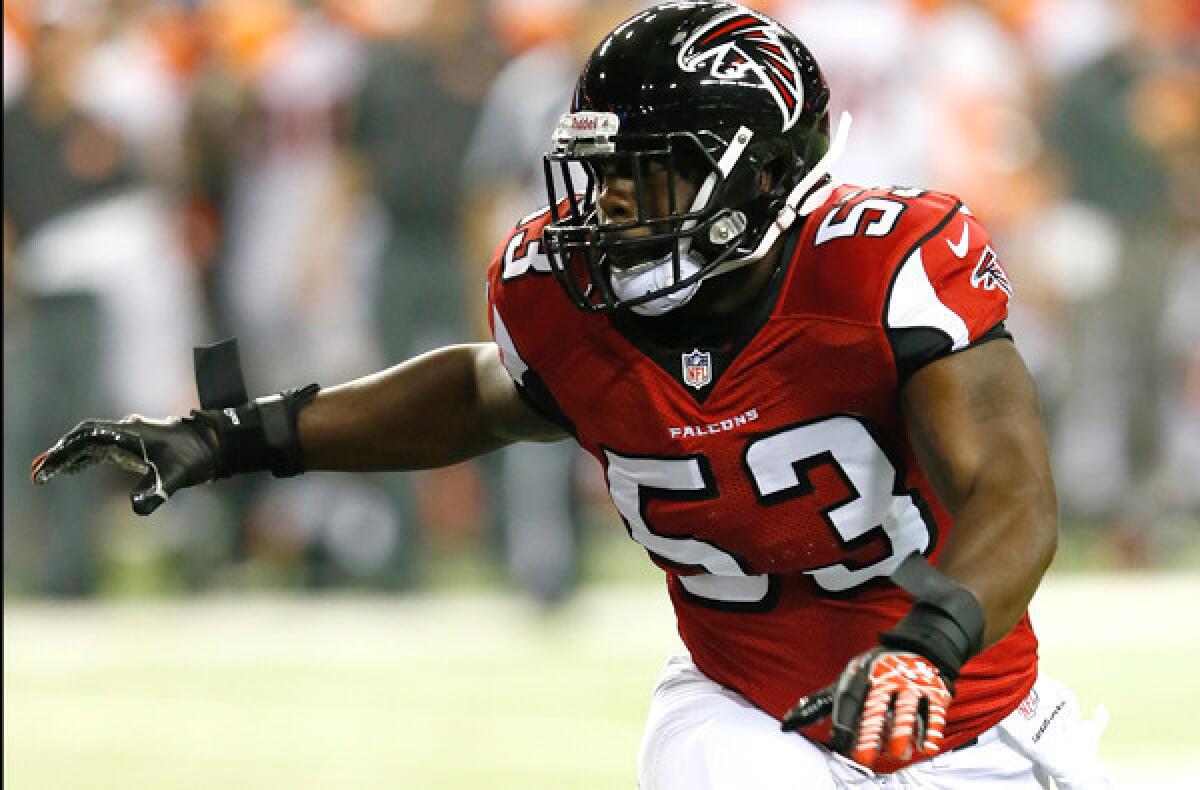
During a break in filming, Shadyac said that even though he moved away from Hollywood, he didn’t retire. “I’ve been trying to get a gig for about 10 years. I can’t tell you how many jobs I applied for where they just didn’t hire me. I had left the private club, and the private club didn’t want me back in.”
Shadyac had spent much of his time in Memphis, where his father had helped build the St. Jude Children’s Research Hospital, teaching, volunteering, giving — trying, he says, to balance the scales of his life. He said he was often reminded of a line God says to Steve Carell at the conclusion of “Evan Almighty”: “The key is to do acts of random kindness each day.”
Even before he heard Banks’ story, Shadyac witnessed similar miscarriages of justice all over Memphis. “I saw kids arrested for being black, my students thrown in jail for crimes they didn’t commit with no evidence and no resources to get the legal help that they needed,” Shadyac said. “While Memphis has deep roots and deep problems, it has the richest soul of any city that I have ever experienced.”
Banks, now a motivational speaker, sees his story as a way to examine all of the shortcomings in the criminal justice system.
“This movie is not only just for me or the California Innocence Project,” Banks said, “but for the many other people who have experienced wrongful accusations, wrongful convictions or may experience it sometime in the future. This is what it’s like to be picked up off the street for something you didn’t do, and by the time they figure out they’ve made a mistake, 10 years have passed.”
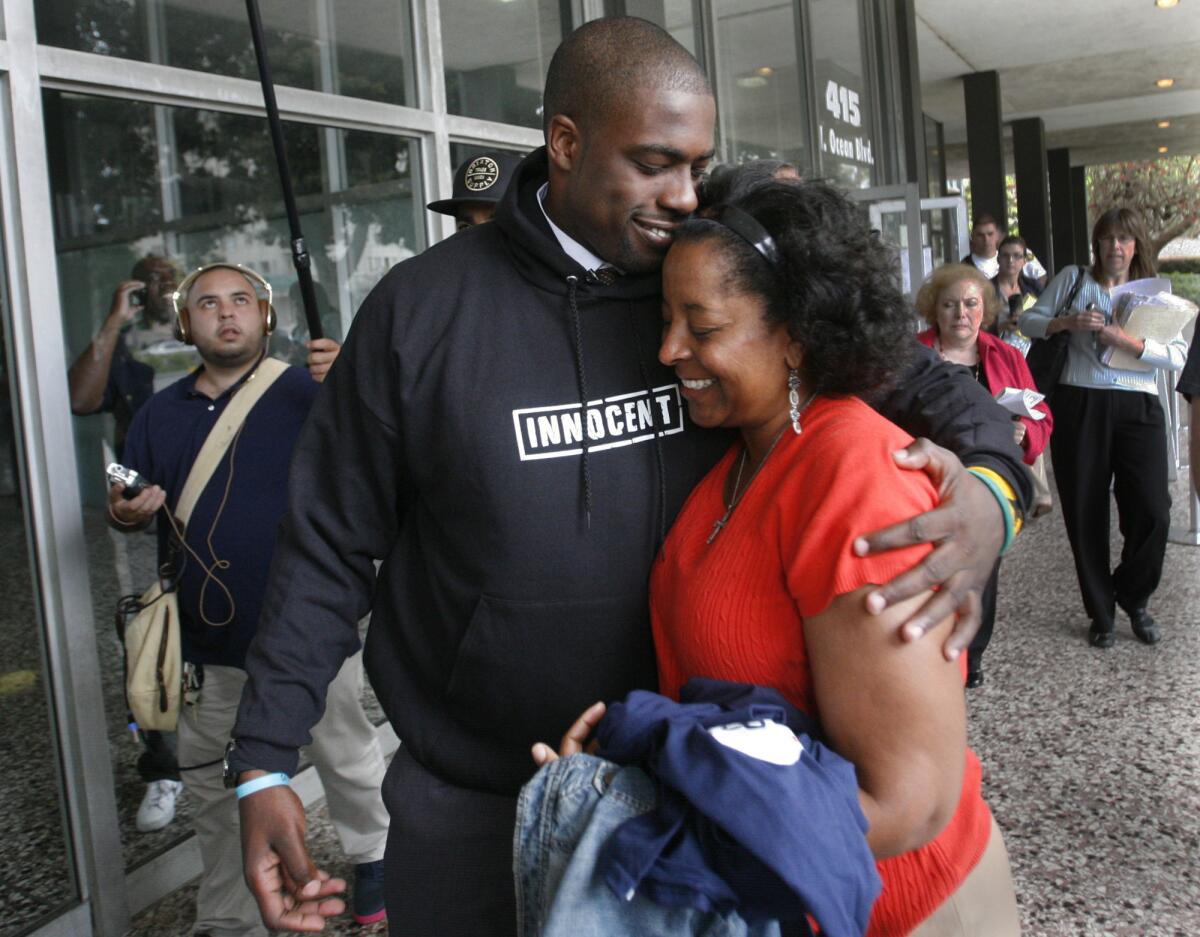
Shadyac knows there’s no real comparison between what he experienced and what Banks endured. Yet he now sees the parallels.
“Brian went through an extraordinarily difficult shadow but came out beaming like the sun. It’s a movie about what you do when the worst thing happens to you. We’re hoping that people will say, ‘You know what, if he can survive that, and even thrive through that, then I can make it through my difficulty as well,’” said Shadyac, who now appears to be working his way back into Hollywood’s good graces, with several potential projects under consideration.
“I had a concussion. I faced my own death,” Shadyac said. “And I reinvented myself.”
John Horn is the host of ‘The Frame’ on KPCC.
From the archives
The real-life saga of Brian Banks
Los Angeles Times coverage of the Brian Banks story as it unfolded
More to Read
The biggest entertainment stories
Get our big stories about Hollywood, film, television, music, arts, culture and more right in your inbox as soon as they publish.
You may occasionally receive promotional content from the Los Angeles Times.

